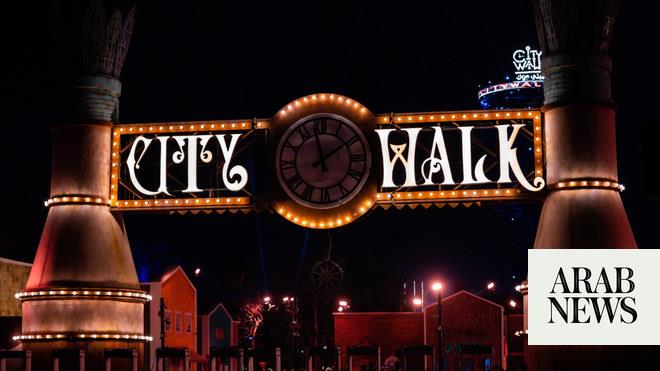
JEDDAH: The man credited with transforming Jeddah into an “open-air museum,” its former mayor Mohammed Said Farsi, died on Tuesday in Paris.
While serving first as chairman of the Jeddah municipality and later as the city’s mayor, he installed hundreds of works of art by renowned local and international artists in public spaces as part of his project to beautify the city.
Hashim Abdu Hashim, the former editor-in-chief of the Okaz daily newspaper, said that Farsi and his legacy will never be forgotten by the people of Jeddah.
“It was really too sad to receive the bad news of his passing,” he said. “We all share this sadness because the man was part of Jeddah life. He was a symbol of the city’s growth and development. The whole nation has known him for more than 50 years as the man who turned Jeddah into a uniquely beautiful city.”
He added that Farsi was the driving force behind the transformative changes that resulted in the familiar Jeddah of today.
“Many people came after him but he remains iconic,” said Hashim. “I remember that he used to go to his office early, at 7 a.m. and stay there until 10 p.m. He never depended on anyone else while doing his own duties. He personally used to inspect work on electricity, pavements and all services in every neighborhood and street of the city.” The city expanded greatly during Farsi’s time in office, he added.
Ghassan Badkook, a member of the public relations committee at the Jeddah Chamber of Commerce and Industry, said Farsi was the first person to think about modern planning for the city.
“He made Jeddah, particularly the corniche, an open museum with artworks by international artists,” he added.
A group of 50 works from Farsi’s personal collection was sold in 2010. William Robinson, senior director of Islamic Art at auction house Christie’s, noted after the sale: “Topped by the 13th century Mosul combination-lock casket, the metalwork in particular performed outstandingly; the collection far exceeded its presale estimate.” The casket alone sold for $759,894.
Journalist Mohammed Al-Nawsani predicted that current Jeddah Mayor Dr. Saleh Al-Turki will rename one of the city’s main streets after Farsi.
“This is the least we could do for a person who spent most of his life in the service of Jeddah, its visitors and its citizens,” he said. “Because of his efforts, Jeddah became known as the Bride of the Red Sea.”
Born in Makkah in 1936, Farsi was expected to follow his father and join the family jewelry business, though from an early age he enjoyed art classes. He attended Al-Rahmaniyah primary school in Makkah and then Mission Preparation School, and in 1963 he received a bachelor’s degree in architecture from the University of Alexandria.
Soon after, he was appointed director of the Civic Planning Office in Riyadh and was later tasked with supervising planning in Makkah and the Southern Region.
About 24 years later, he earned a master’s degree from the University of Alexandria, for which his final thesis was on planning for Makkah’s holy sites. He later obtained a Ph.D. from the Faculty of Engineering at the same university.
In Aug. 1972, Farsi was appointed chairman of the Jeddah municipality, and became the city’s mayor nine years later, a position he held until his retirement in Nov. 1986.
During that time, he recalled the beauty of the coastal strips of Alexandria and Beirut, and considered what could be done to improve Jeddah’s corniche. Farsi believed that the city’s growth and progress did not have to come at the expense of culture and beauty, and that art is a vital part of an urban environment. He therefore invited Spanish architect Julio Lafuente to help with a beautification project for Jeddah and suggest artworks that could be installed around the city.
At first he looked to local and regional artists, including Arif Al-Rayess and Shafiq Mazloum from Lebanon, Mustafa Senbel from Egypt, along with several Saudi artists, including Maha Malluh. However, Farsi felt like his beloved city deserved much more and so began to cast his net wider and succeeded in attracting renowned international artists such as Henry Moore, Victor Vasarely, Alexander Calder, Arnaldo Pomodoro, Joan Miró, Cesar Baldaccini, Sylvestre Monnier, Jean Arp and Jacques Lipchitz, among many others.
Within a decade, Jeddah was transformed into an open-air museum, with more than 400 sculptures dotted around the city and its corniche. Now, there are thought to be more than 600. In 1991, Farsi’s son, Hani, published “Jeddah, City of Art,” a book that celebrated his father’s achievements and detailed the monumental works of art he brought to the city. They include works from most major movements and disciplines. Some, like the famous giant Bicycle created by Lafuente in 1982, have become landmarks.
According to Christie’s at the time of a sale in 2014 of 30 Egyptian works owned by Farsi, his collection of Egyptian modern art was the most important of its kind in private hands. Amassed over decades and numbering several hundred works, the auction house said it tells a complete history of Egyptian art in the 20th century.
“The best private collections speak to the personality of their collectors, and Dr. Farsi’s does this with eloquence. Comprising works of distinctive beauty and inspired by Dr. Farsi’s passion for the varying and often contrary trends and schools of Egyptian Modernism, the collection reveals a collector with singular vision and wide-ranging tastes,” the auction house noted.









